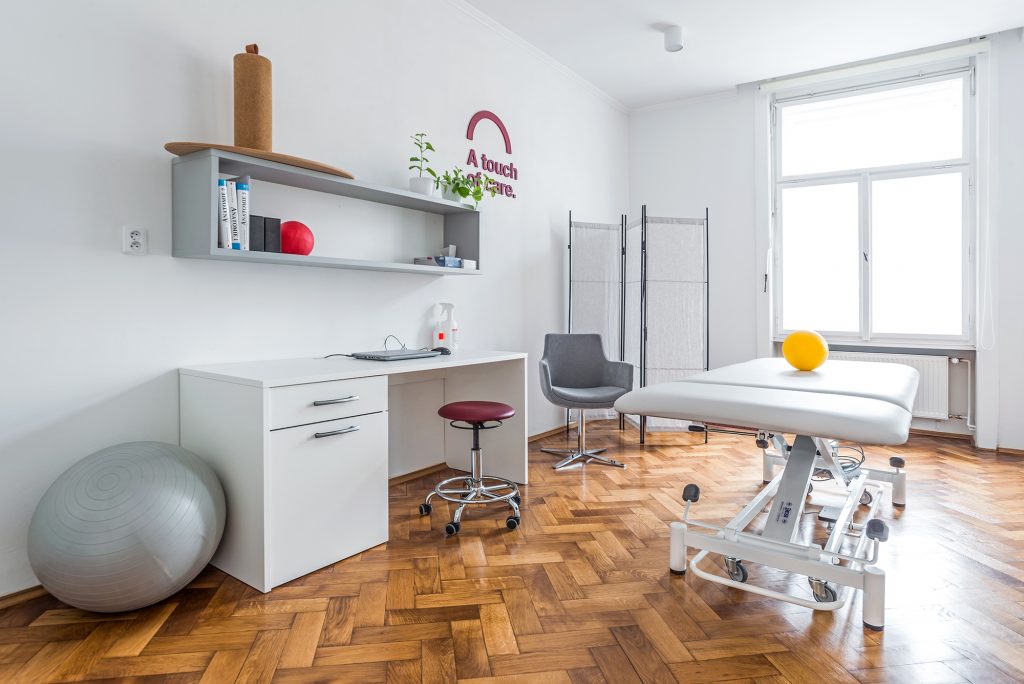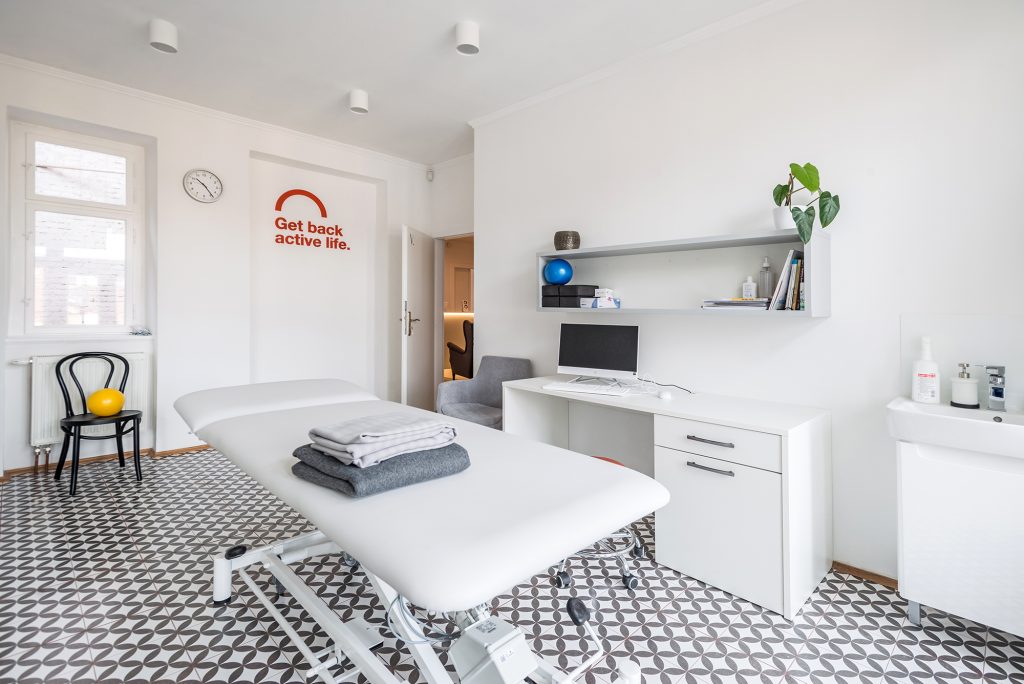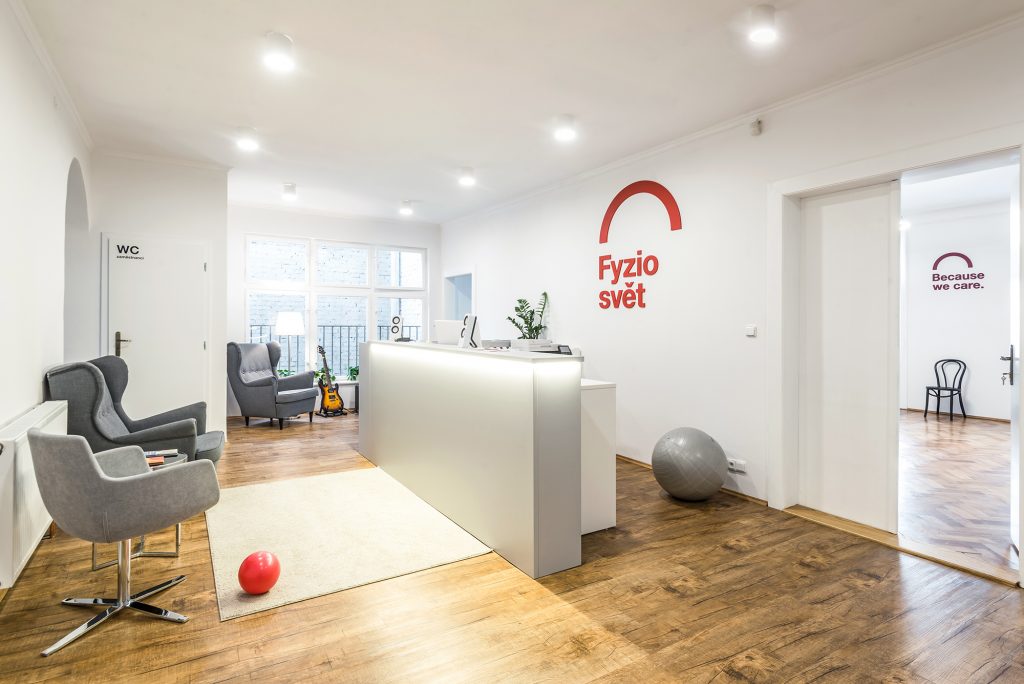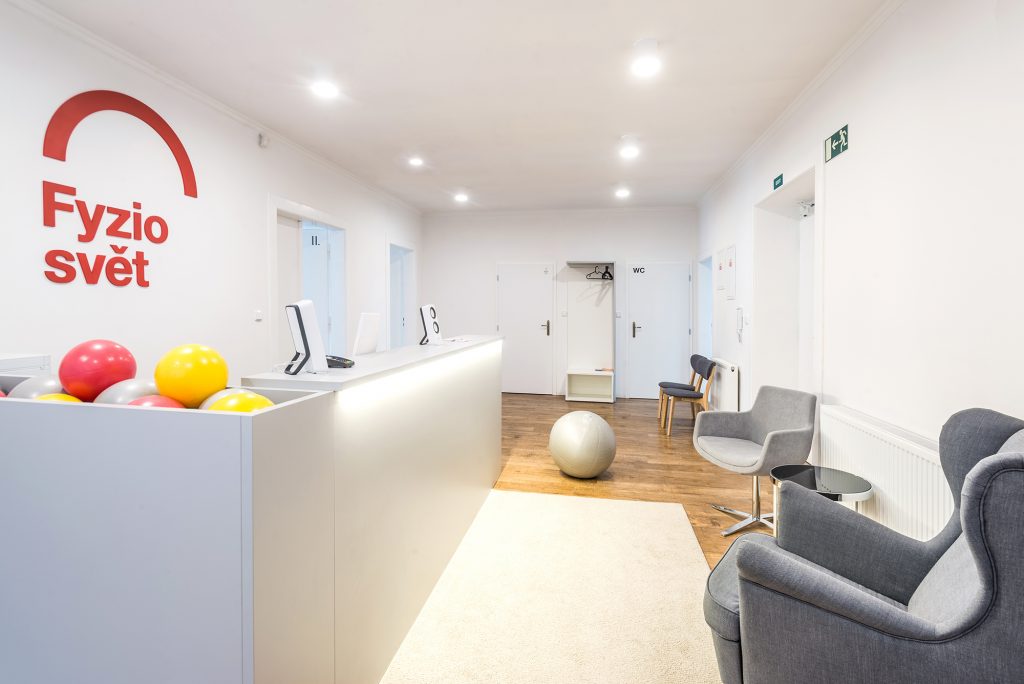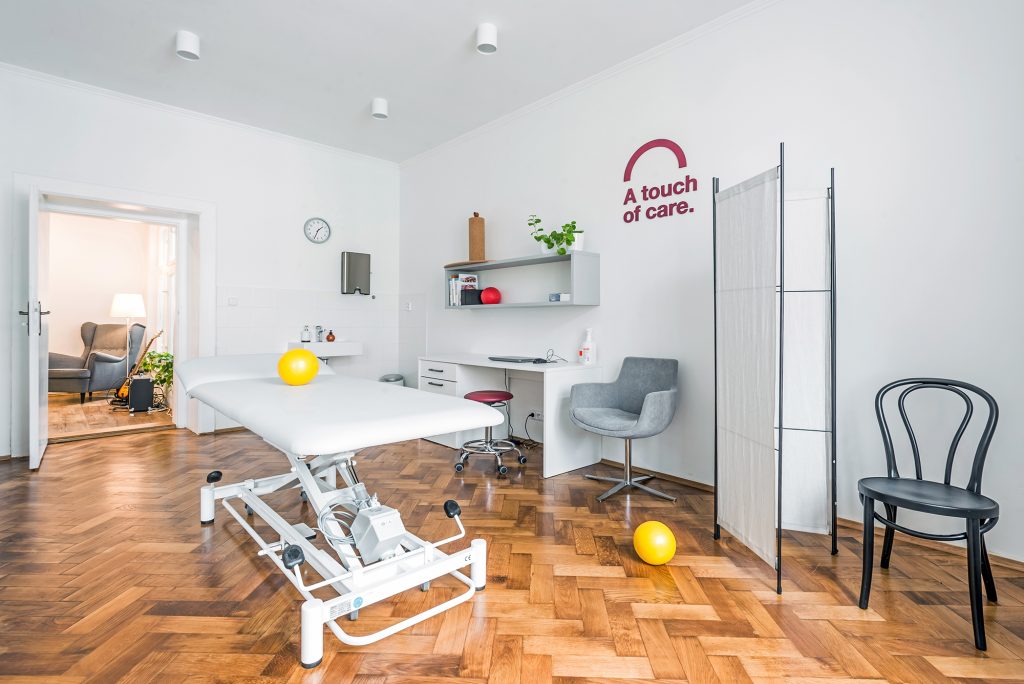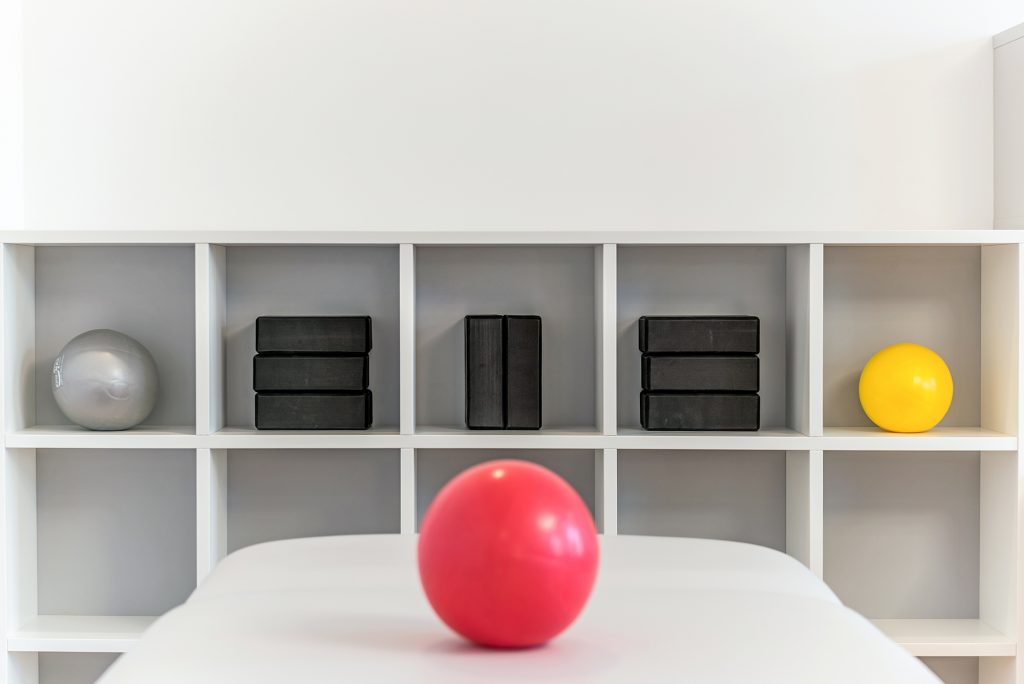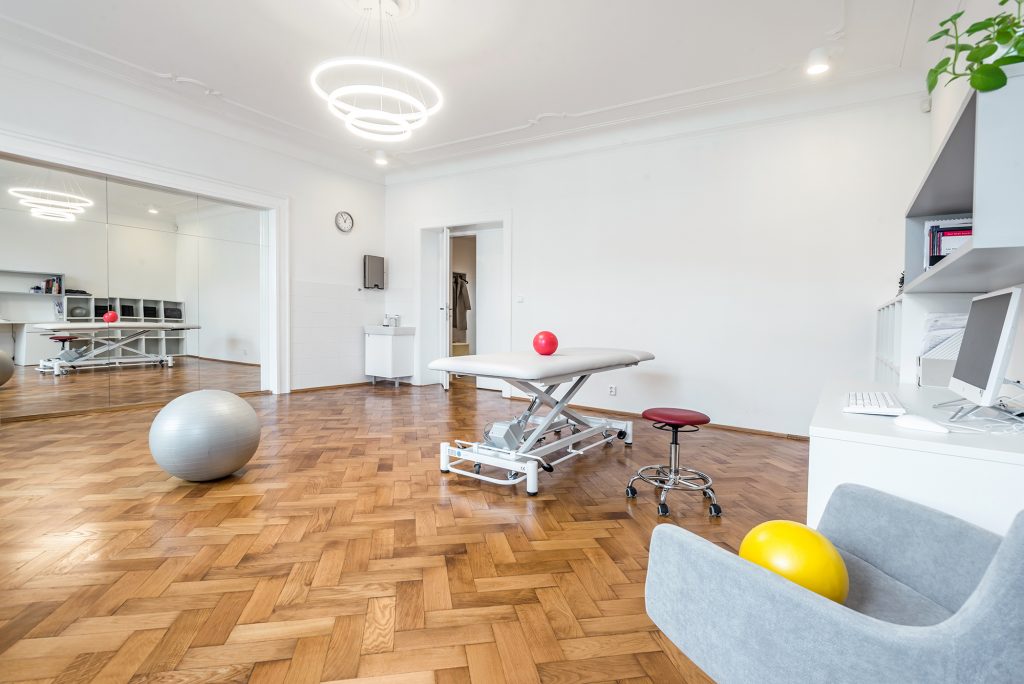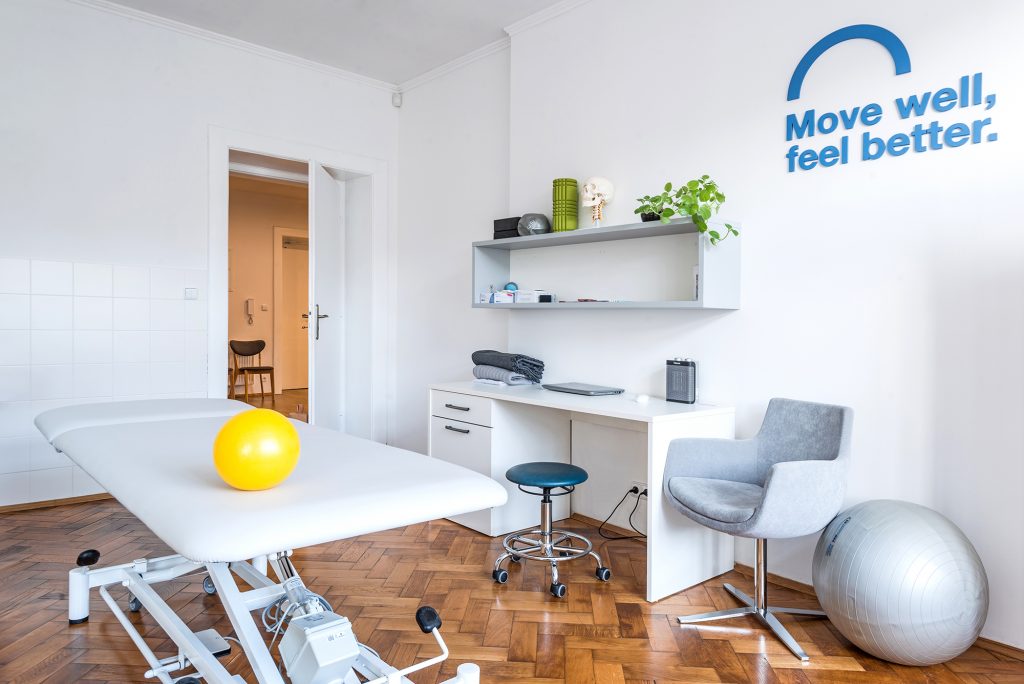Herniated Disc in the Lower Back and Its Treatment
A herniated disc most commonly manifests as pain in the lower back, which can gradually spread into one or, less frequently, both legs. This condition is often accompanied by muscle weakness and sensory changes such as tingling or numbness in specific areas, depending on the nerve being compressed. The cause of the herniation, or more precisely the final trigger in a gradual process of overloading, is often the lifting of a heavy load while bending forward combined with a twisting motion. The disc rupture results in sudden pain, and symptoms worsen with coughing, sneezing, laughing, or prolonged standing or sitting. Movement or lying down can provide relief by reducing pressure on the disc.
The Problem Occurs When the Disc Presses on a Nerve
- Segment L5/S1: The most common herniation occurs between the L5 and S1 vertebrae (the last lumbar and first sacral vertebra). In this case, in addition to back pain, the client experiences pain along the back of the buttock, thigh, calf, and the outer edge of the foot, even reaching the little toe. In more severe cases, weakness may develop, and standing on the toes may become difficult.
Segment L4/L5: Another frequent issue is herniation at the L4/L5 level, compressing the L5 nerve root. The pain and sensory changes are felt on the outer side of the thigh, the front of the shin, and the top of the foot. Walking on the heels may become difficult.
Segment L3/L4: Compression between the L3/L4 vertebrae (L4 root) causes pain and sensory changes on the front of the thigh and the inner part of the shin, extending to the inner ankle. Weakness may be felt when getting up from a chair or climbing stairs.
The Severity of a Herniated Disc Can Vary
A disc can herniate in several ways, with different stages of severity. It always depends on whether and how much the herniated disc presses on the nerve structures. The more advanced the stage, the more obvious the symptoms of nerve compression become, with pain and sensory changes extending further down the leg.
- Bulging: The disc bulges outward without damage to the outer layer, but it extends beyond the vertebral bodies.
- Protrusion and Herniation: The outer layer tears, allowing the disc contents to leak through small cracks in the vertebral rim.
- Extrusion: The disc content breaks free from the outer layer but remains connected to the disc.
- Extrusion with Sequestration: Portions of the disc’s nucleus move into the space between the spinal canal and the spinal cord membrane.
Seek Immediate Medical Attention If You Experience:
- Progressively worsening symptoms such as pain, numbness, or weakness that intensify to the point where they interfere with daily activities.
- Issues with bladder control or urination, such as an inability to hold urine or difficulty urinating even with a full bladder.
- Loss of sensation in the inner thighs, the back of the legs, or around the anus.
Surgery Only When Physiotherapy Fails
Surgical intervention is typically considered only when conservative treatment fails, and the client continues to experience severe pain. If the condition involves leg weakness (muscle flaccidity), surgery may be expedited to prevent permanent nerve damage and muscle dysfunction. However, the final decision should always be made in consultation between the doctor and the client, considering the symptoms, their duration, and the client’s preferences.
How Treatment for Herniated Discs Works at Fyzio Svět
The goal of physiotherapy at Fyzio Svět is to help you return to full activity as quickly as possible and prevent the pain from recurring. A key aspect of treatment is strengthening the deep stabilizing system to provide greater stability to the damaged part of the spine and promote proper posture. We will advise you on how to adjust your workspace to prevent further overloading. At Fyzio Svět, we also teach you how to regenerate after physical exertion, stretch properly, and improve spinal flexibility.
Modern Technology Can Help Too
At our facility, we also use state-of-the-art technologies such as high-performance lasers, which have proven effective in disc healing. Laser therapy reduces inflammation, alleviates pain, and speeds up the recovery of overstrained or injured areas. Exercise, strengthening, regeneration, and muscle relaxation are essential elements of the treatment. If the treatment is conducted correctly, mechanical pressure on the disc will decrease, which gradually reduces pain and alleviates symptoms.
